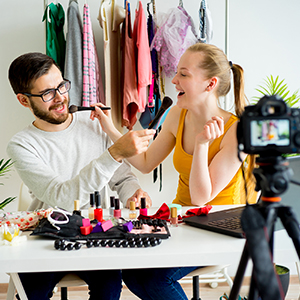Inclusive beauty has become embraced by brands and retailers alike in its ability to reach the previously under-served segments of the population who are eagerly accepting products specifically targeted at catering to their needs. Multicultural products, which started in hair care with “ethnic” brands in the market catering to multicultural consumers, have since evolved and penetrated other categories, such as makeup. The rise of gender fluidity and gender-free products is particularly seen in the fragrances and makeup classes.
The multicultural hair care market has seen the rise of certain brands, such as Devacurl, which began the movement of “calling on all curls,” offering products for all ethnicities, colors, and races. Since Devacurl, other brands have followed suit.SheaMoisture has become one of the titans of the multicultural movement, expanding its naturally positioned portfolio into personal cleansing, skin care, and even makeup. Once only largely present in the mass trade class, the category has migrated into luxury, with brands like Madam C.J. Walker and Briogeo offering innovative products in leading specialty retailers, such as Sephora.
However, hair care has only been the beginning of the movement. New makeup brands, such as Fenty Beauty targeting all skin colors and putting an emphasis on dark complexions with an initial launch of 40 shades of foundation, has become of the most successful launches in 2017. Makeup and facial skin care brands are still represented in the multicultural mass market. The brands are expected to further expand their offerings of inclusive products to cater to all demographics.
Another blossoming segment in multicultural beauty is the rise of gender-free products in various categories. Niche, artisanal gender-free fragrances, offered by By Killian and Le Labo, have become key contributors to the segment. Enticing and interesting names of fragrances, such as Straight to Heaven and Vodka on the Rocks, attract male and female consumers alike. However, fragrances is not the only gender-free category to experience a revival. Makeup, with brands such as Milk Makeup with campaigns of inclusivity, and even mass, iconic brands, such as Covergirl, have embraced male makeup as a true movement, by making James Charles its first Coverboy.
To help you better understand inclusive beauty, we are introducing Inclusive Beauty: Analysis of the Rising Movement in the United States, a market research report that analyzes the market size, competitive landscape, and trends in beauty and grooming among men and women. This report will help you identify the opportunities in this dynamic and fast-growing market segment by providing competitive intelligence on the segment’s evolution, as well as on the key players in the multicultural and gender-free arena. The data in this report covers the 2018 base year and will be published during the 4th quarter of 2018. To learn more, please contact our team.

